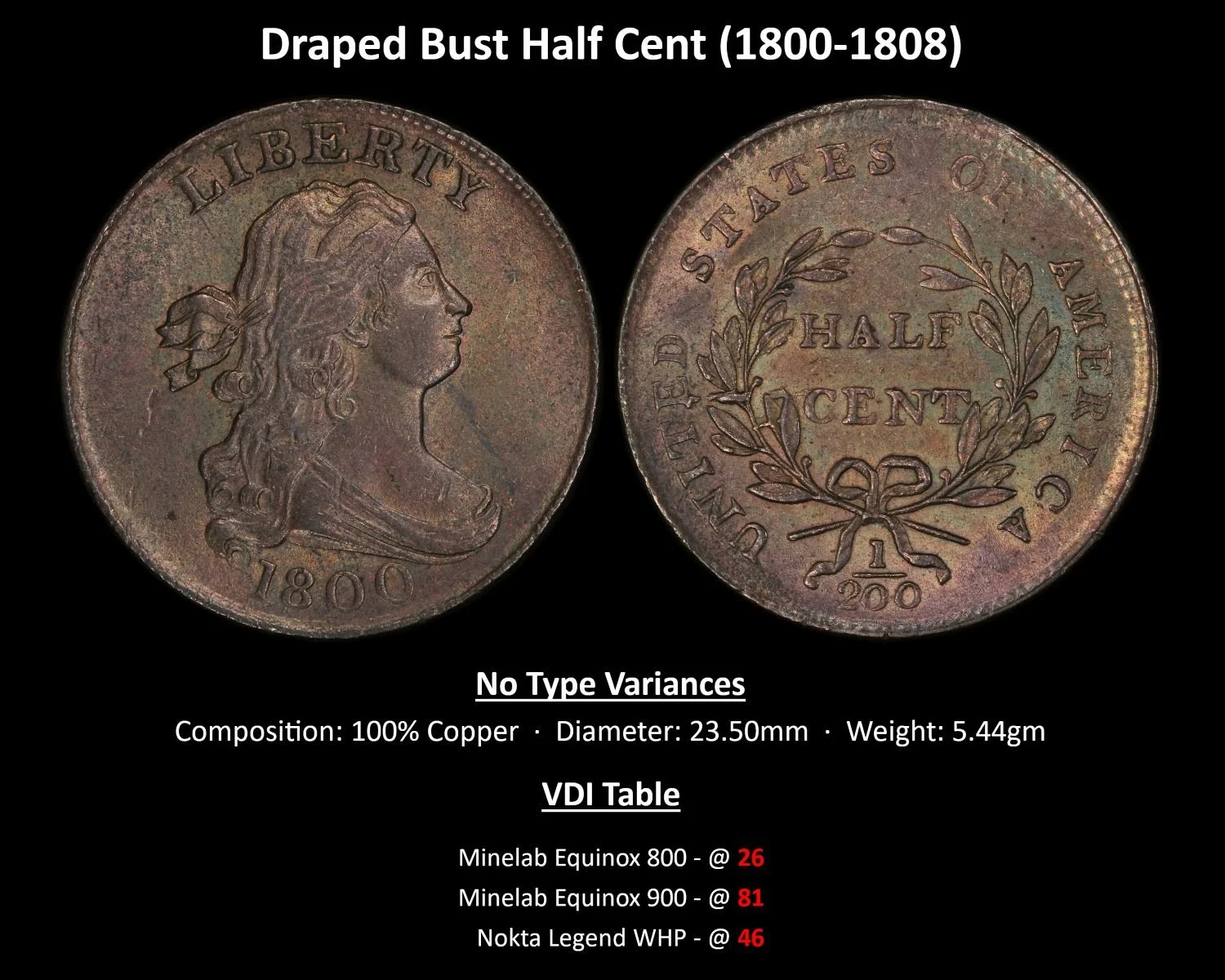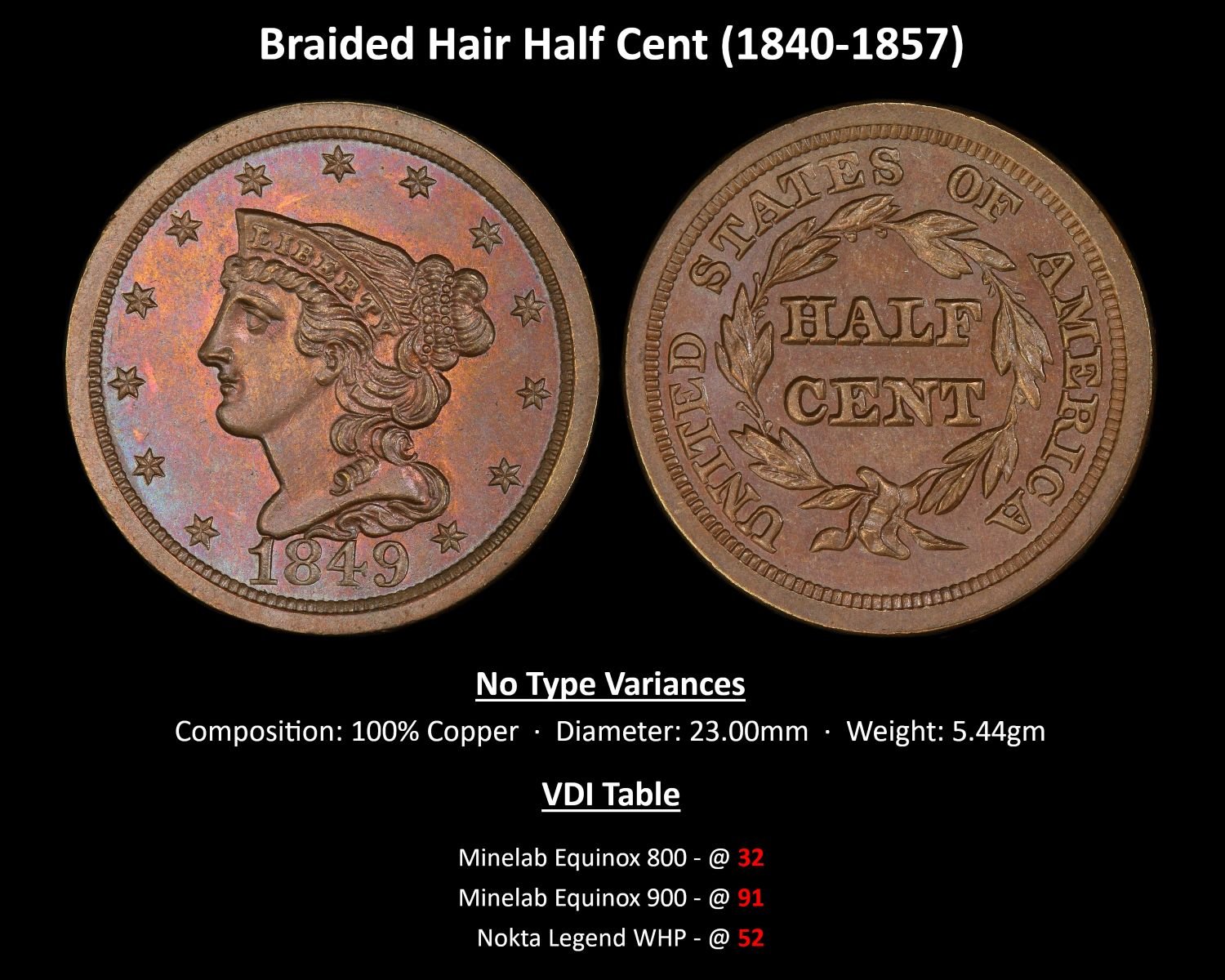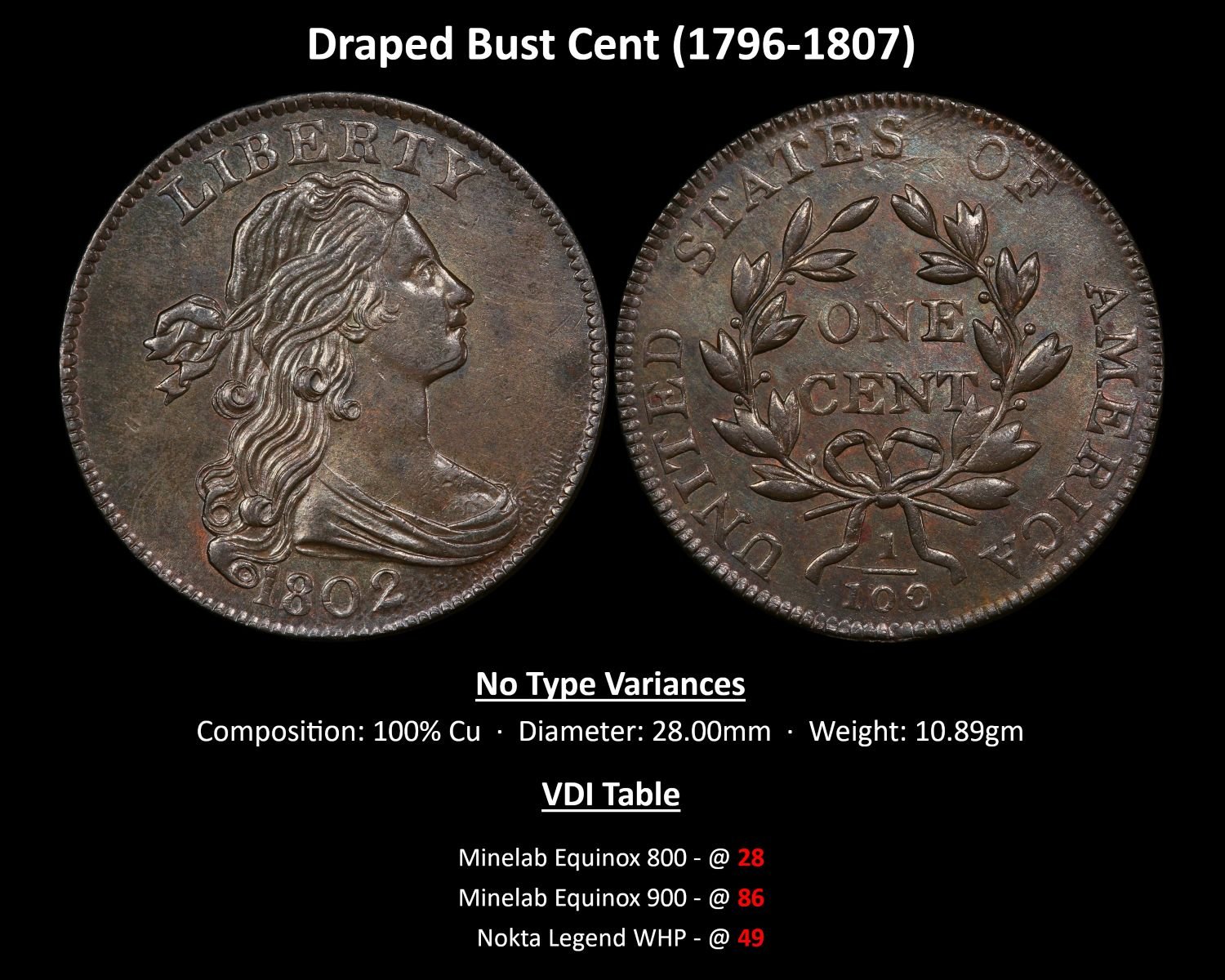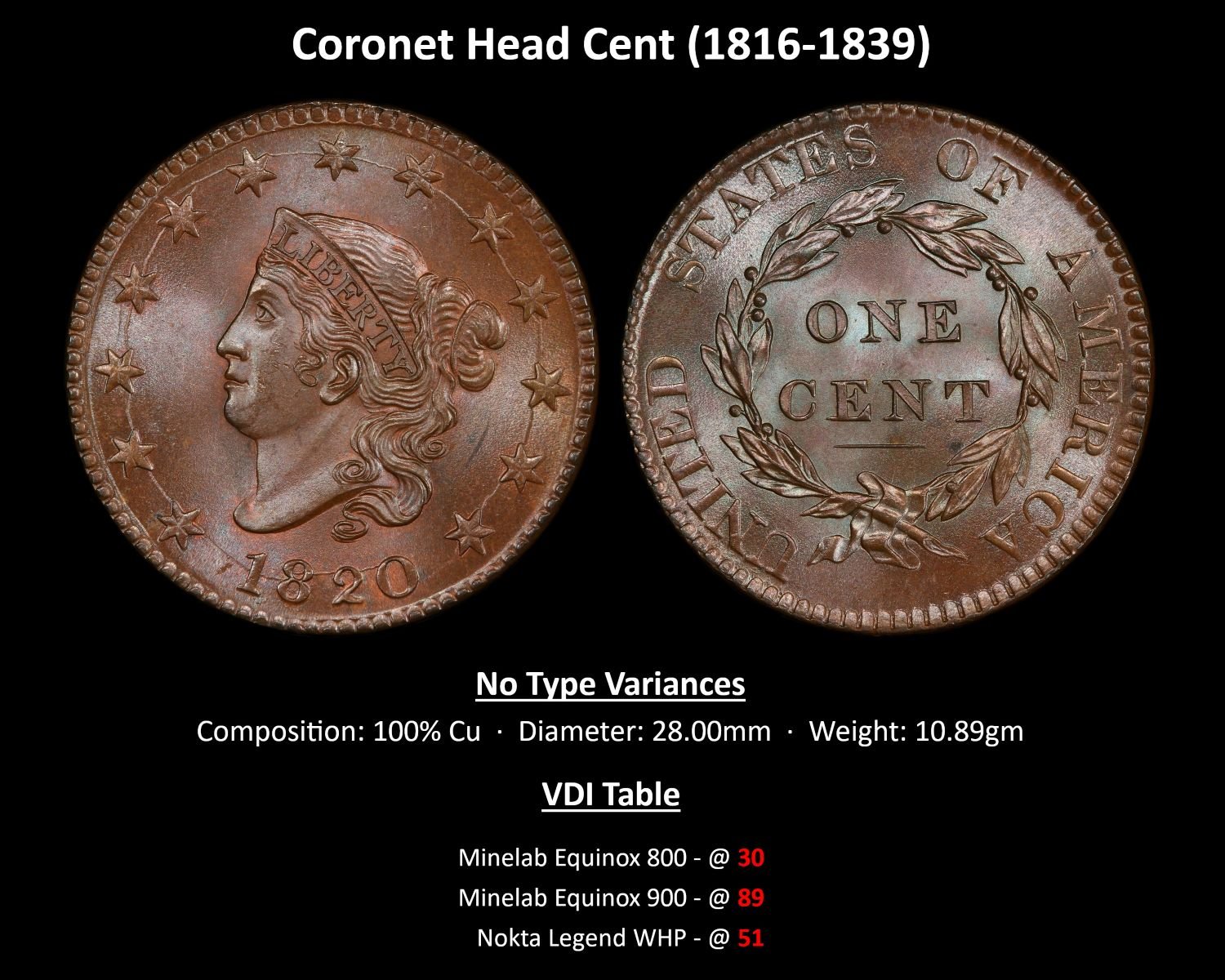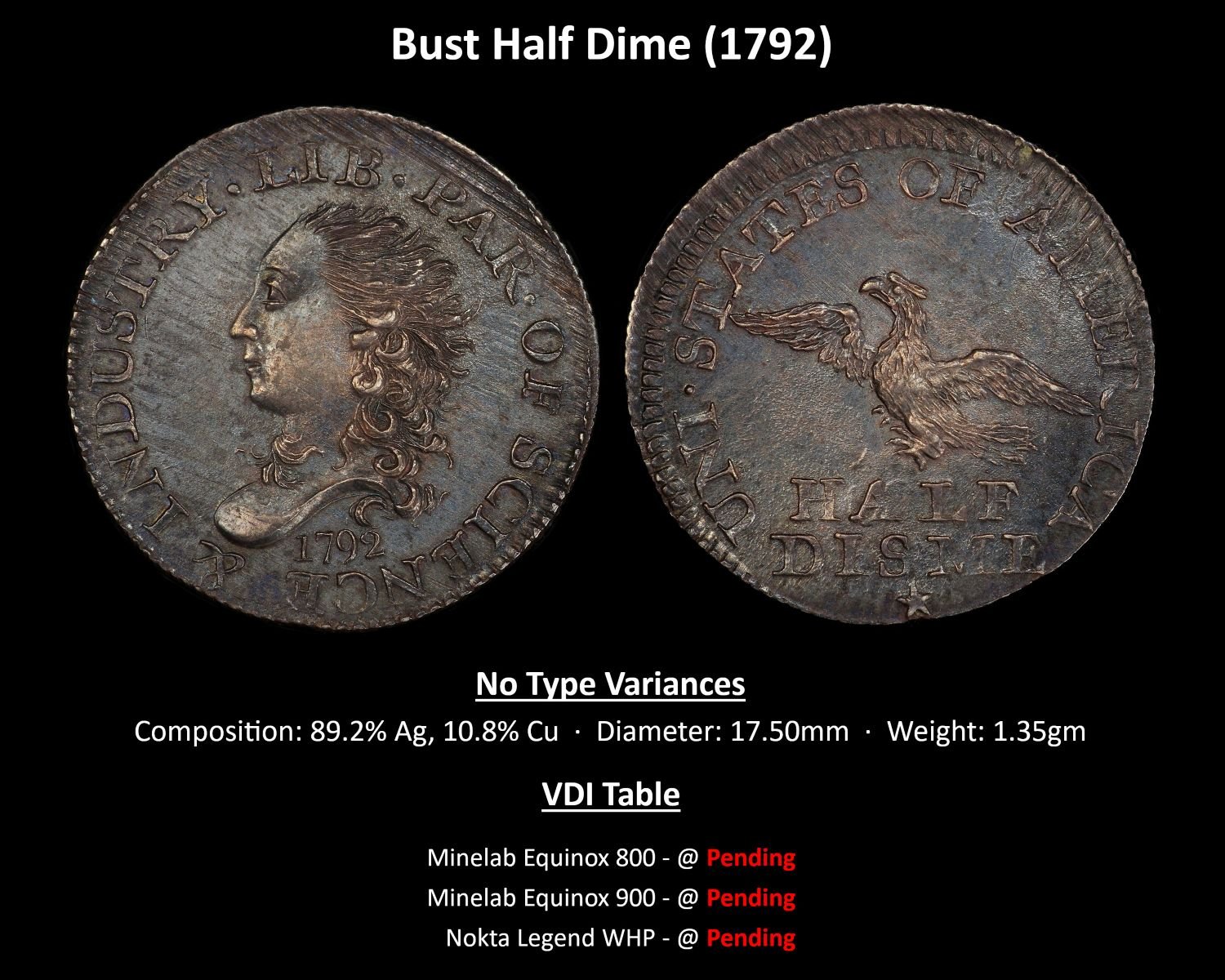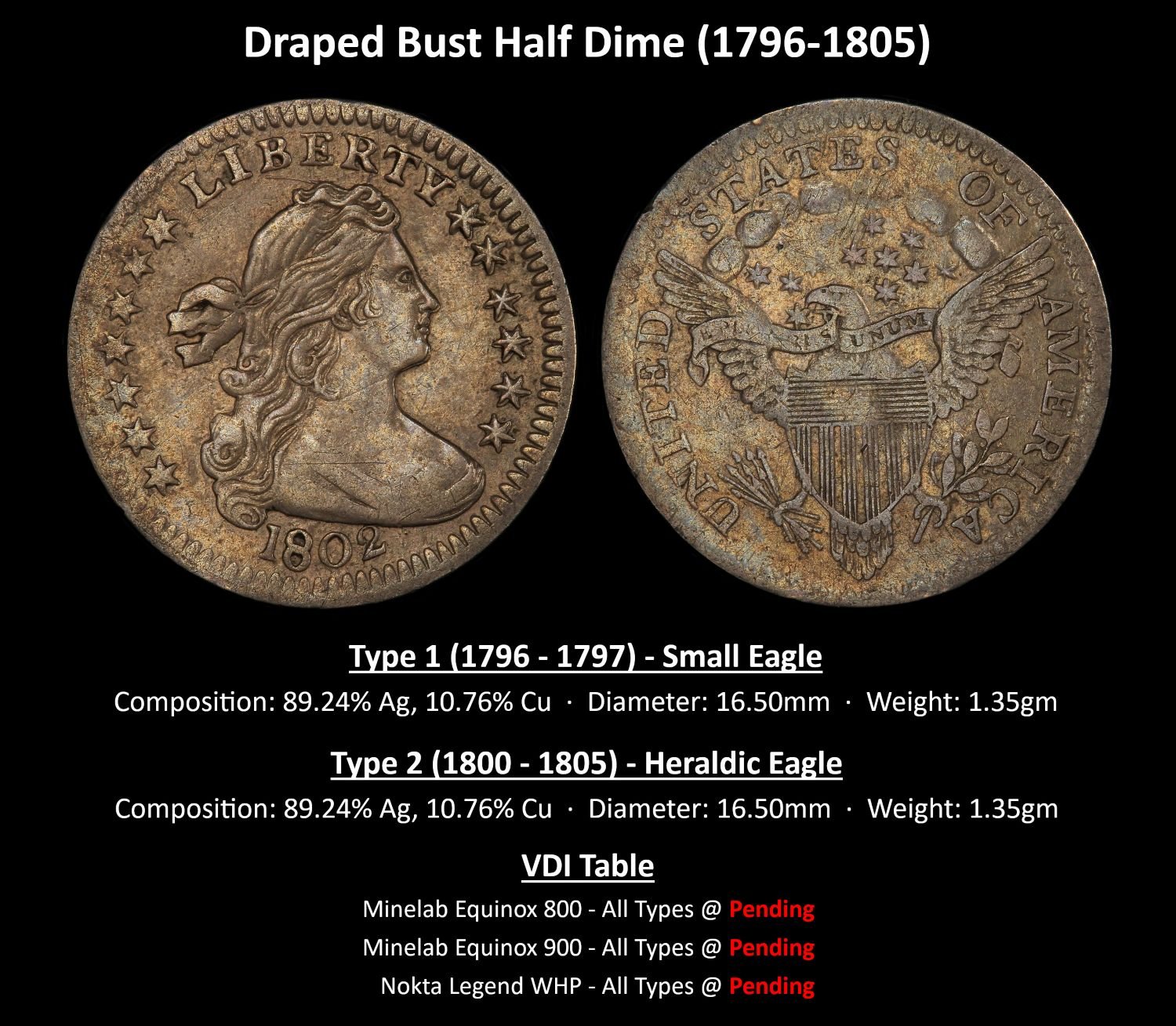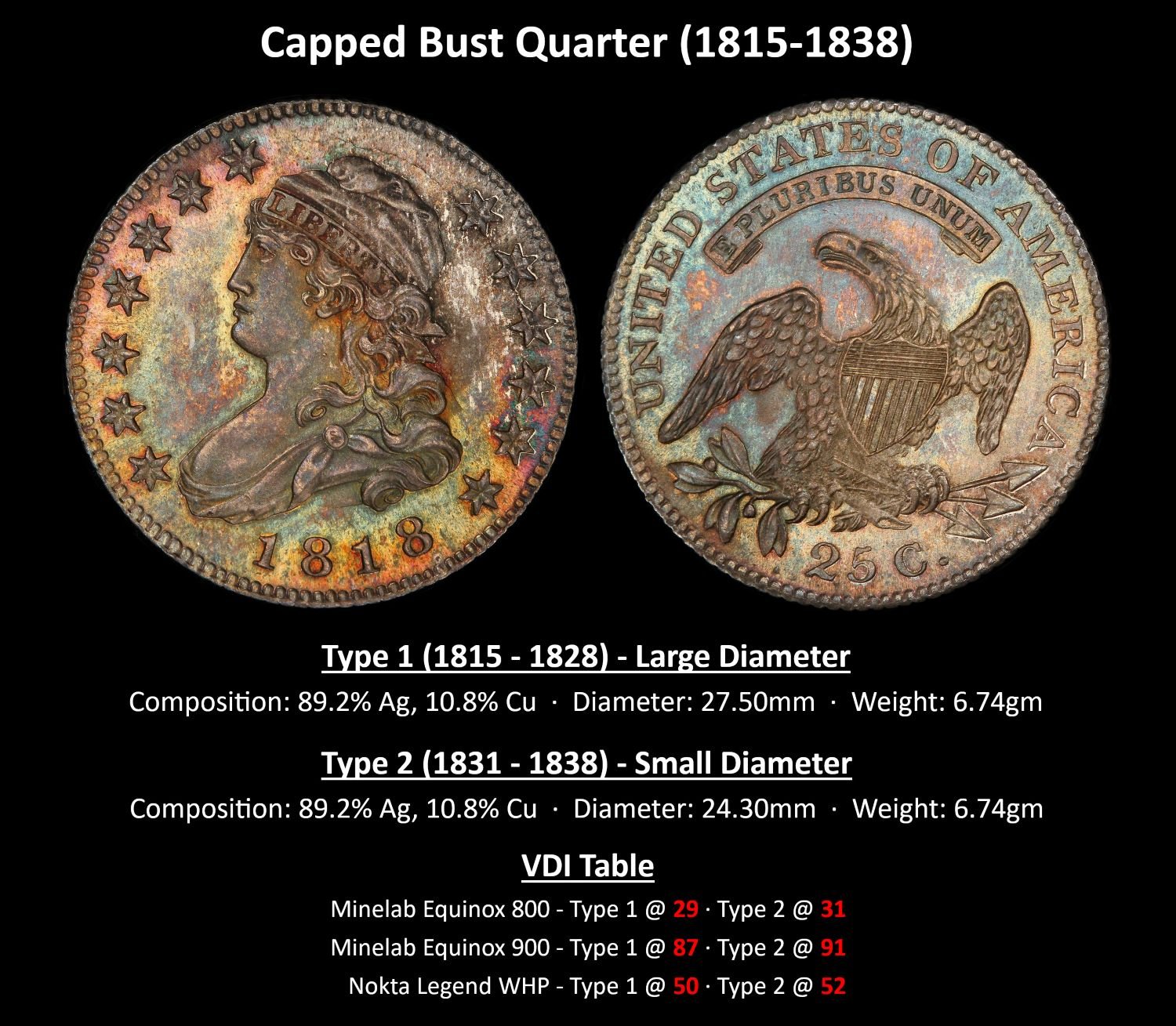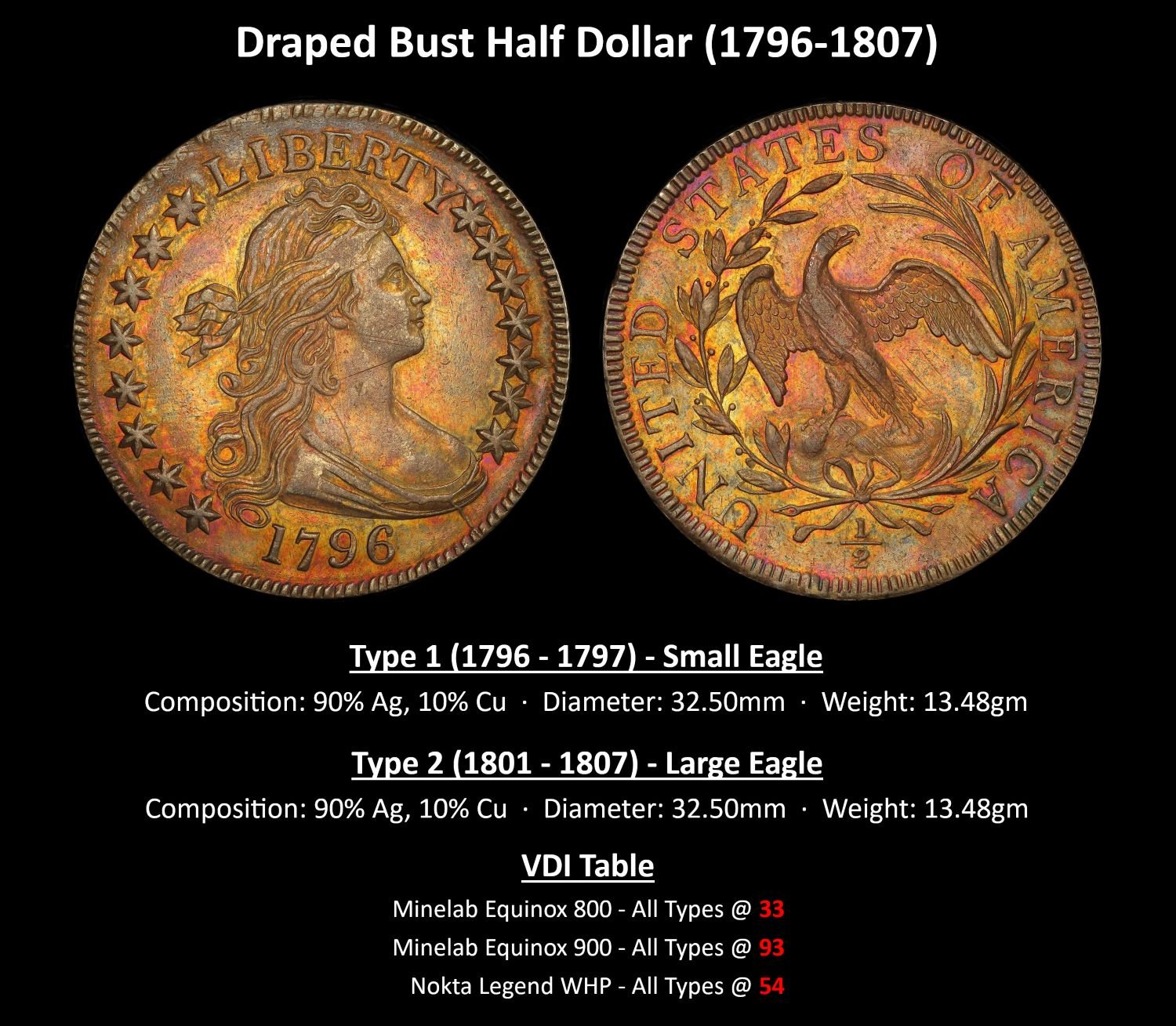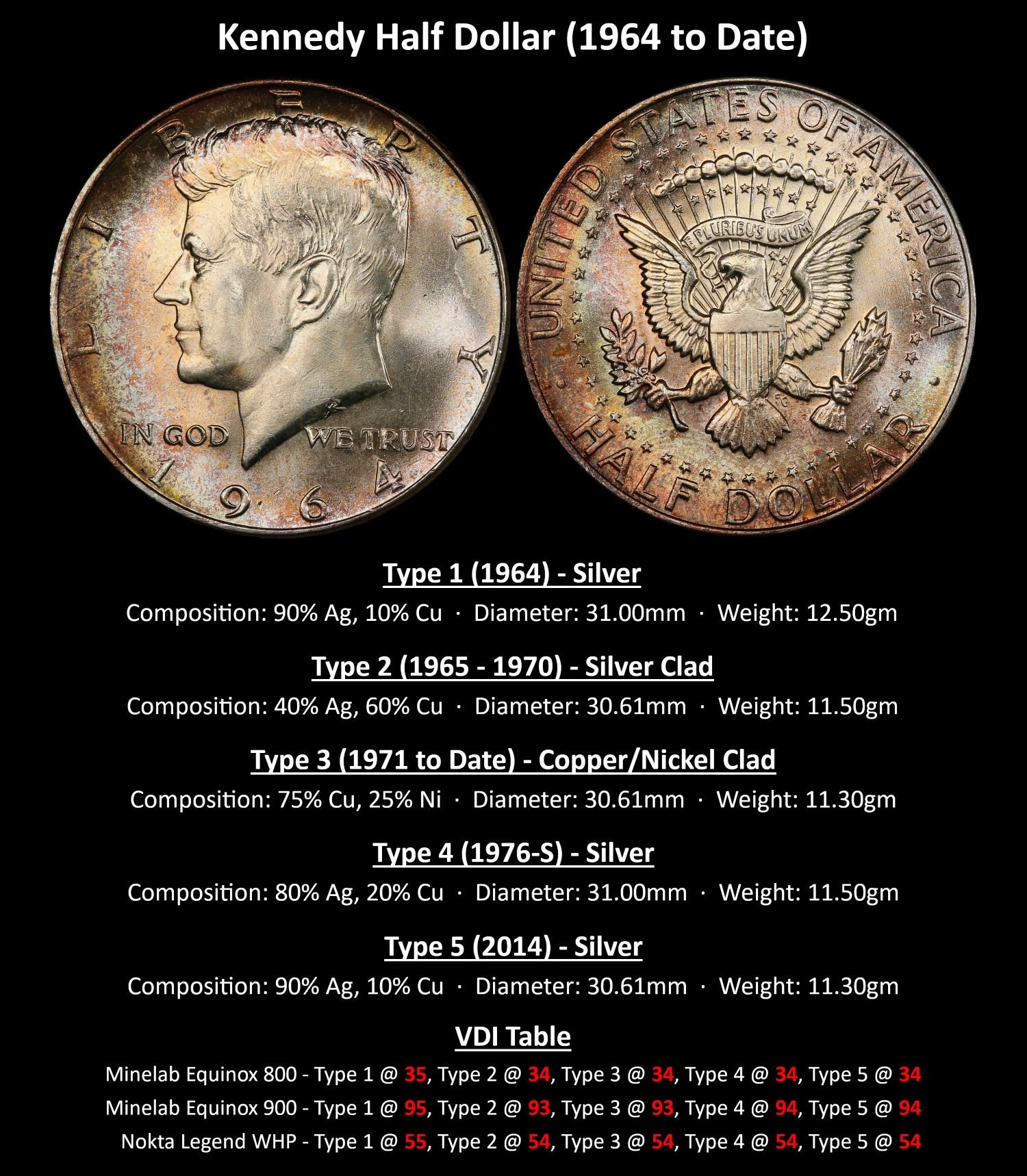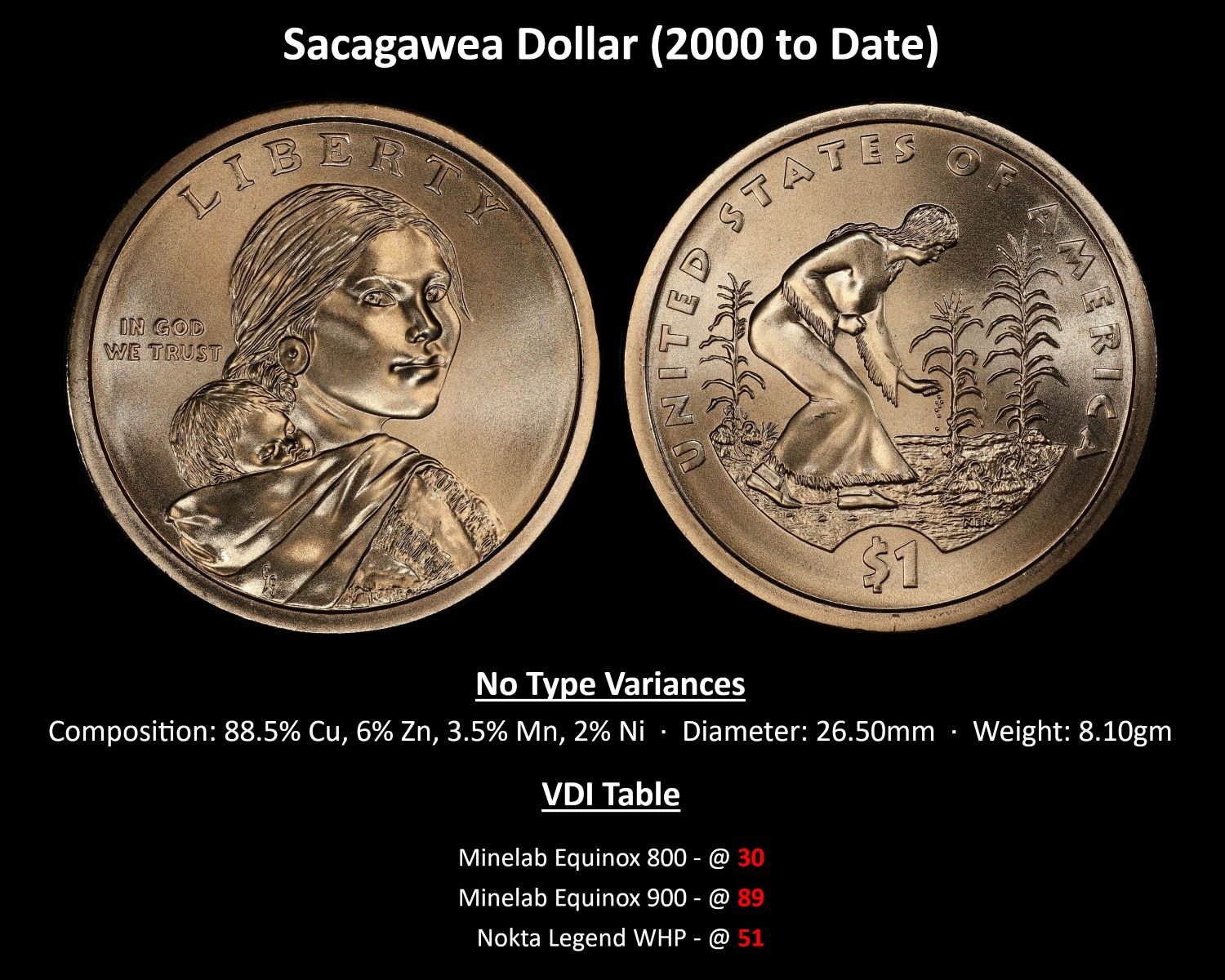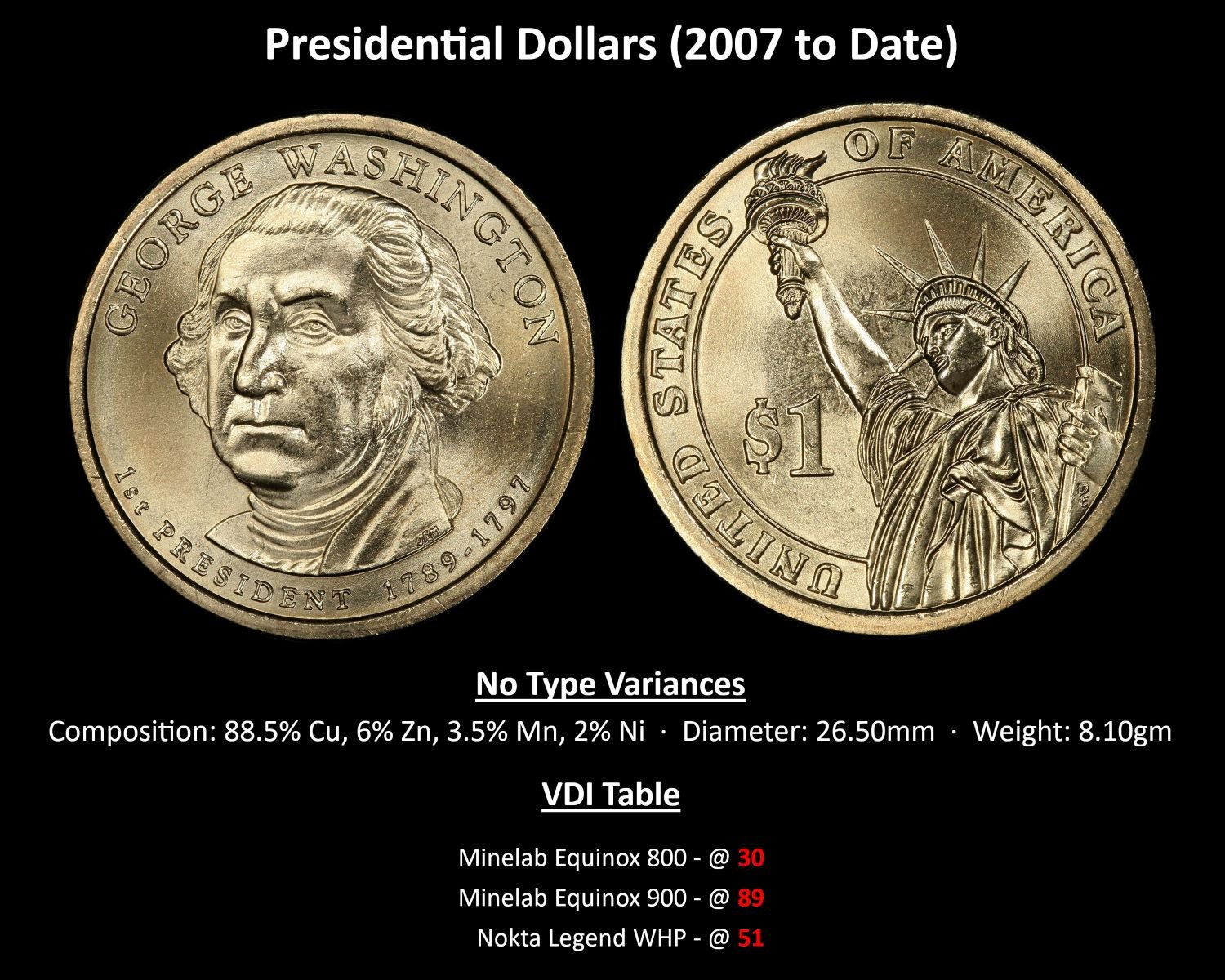VDI: Know Your Types
Visual Discrimination Indicator, more commonly known as VDI, has been the bane of metal detectorists for decades. Each and every time a new detector hits the market, the Internet is flooded with inquiries. What is the VDI for a Mercury Dime? A Lincoln Cent? A Seated Liberty Quarter?
Being a detectorist for the past twenty-odd years, the constant stream of VDI-related questions - and the lack of a definitive source - prompted me to author this blog post. I do believe it to be one of the most comprehensive resources on VDI for U.S. Coinage ever published. Of course my opinion is biased however, I find the vast majority of currently available content to lack completeness.
I’ll validate my position with one simple example. If I were to ask a detectorist what the VDI for a Indian Head Cent is, I’m willing to bet 9 out of 10 answers would be wrong. The correct answer should be ‘it depends on the type’. Indian’s - from 1859 to 1909 - had three (3) different types. Types may have a different design, composition, weight, diameter, or any combination thereof. As a result, each type may display a different VDI. The types of Indian Head Cents include:
Indian Head Cent - Type 1 (1859)
Composition: 88% Copper, 12% Nickel
Diameter: 19:00mm
Weight: 4.70gm
Equinox 900 VDI: 46
Indian Head Cent - Type 2 (1860 - 1864)
Composition: 88% Copper, 12% Nickel
Diameter: 19:00mm
Weight: 4.70gm
Equinox 900 VDI: 46
Indian Head Cent - Type 3 (1864 - 1909)
Composition: 95% Copper, 5% Tin/Zinc
Diameter: 19:00mm
Weight: 3.11gm
Equinox 900 VDI: 70
Some types may simply be changes to the design elements of a coin. The transition from Indian Type 1 to Type 2 was the addition of a shield on the Reverse; 1859 Indian’s did not have the shield. Design element type changes do not affect VDI. However, as shown in the Type 2 to Type 3 transition, both the composition of the coin, and the weight, changed. This resulted in a significant VDI swing.
Type changes are common and still occur to this day. However, they were a bit more frequent in the 1800’s as the U.S. Mint experimented with different coin alloys and sizes. For detectorists that use VDI as an extraction indicator, type-based VDI is imperative knowledge to have. How many Type 1-2 Indian’s have they missed?
This article documents the different types for each U.S. Mint business strike (general circulation release) across all denominations. Air-test VDI numbers for each composition-based type are included for the metal detectors listed. As more detectors are tested, this article will be updated to reflect the new VDI numbers.
Special thanks to Nokta Detectors for sending me a Nokta Legend to perform VDI tests.
A big thanks to Missoula Gold and Silver Exchange and to Grizzly Gold & Silver for providing me access to a Draped Bust Dime and Liberty Head $20 Gold for testing.
* Periodic Symbols: Au - Gold, Ag - Silver, Sn - Tin, Zn - Zinc, Cu - Copper, Ni - Nickel
** We reached out to Garrett in an attempt to get a Vortex on hand for testing. Our request wasn’t answered.
*** There are still a few gaps to be filled on early Gold, and hard-to-locate 1793-1795 coinage.
Current List of Metal Detectors Tested
Minelab Equinox 800
Minelab Equinox 900
Nokta Legend WHP
Register your email address below if you would like to be notified each time this article is updated.
The sections that follow provide images of each denomination, document every defined type and its corresponding specifications, and provide an air-test VDI for all listed metal detectors. Simply click on the category title and it will expand to show all coinage within that category. You can also download a PDF using the link below.


